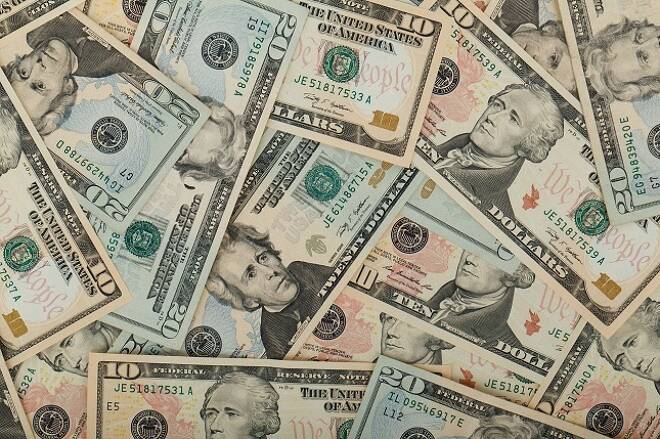Advertisement
Advertisement
U.S. Dollar Index (DX) Futures Technical Analysis – Strengthens Over 92.855, Weakens Under 92.695
By:
The main trend is down, however, momentum has been trending higher since the formation of the closing price reversal bottom on September 1.
The U.S. Dollar is inching lower against a basket of major currencies shortly before the close on Thursday with most of the losses attributed to a rebound in the heavily-index weighted Euro. Traders are saying a report showing that the number of Americans filing new claims for unemployment benefits fell more than expected last week may have been responsible for the greenback’s late sell-off. After they initially showed little reaction to the news.
At 20:15 GMT, September U.S. Dollar Index futures are trading 92.770, down 0.064 or -0.07%.
Traders also showed little reaction to the ISM Non-Manufacturing PMI report. The ISM said its non-manufacturing index showed a reading of 56.9% for August down from July’s reading of 58.1%. The data was relatively in line with forecasts calling for a reading of 57%.
In my opinion, the dollar index likely retreated on position-squaring ahead of Friday’s U.S. Non-Farm Payrolls report and the start of the long Labor Day holiday weekend.
Daily Swing Chart Technical Analysis
The main trend is down according to the daily swing chart, however, momentum has been trending higher since the formation of the closing price reversal bottom on September 1.
A trade through 93.480 will change the main trend to up. A move through 91.725 will negate the closing price reversal bottom and signal a resumption of the downtrend.
The short-term range is 93.980 to 91.725. Its 50% level at 92.855 is acting like resistance.
The minor range is 93.480 to 91.725. Its 50% level at 92.605 is acting like support.
The major support is the long-term Fibonacci level at 91.760.
Short-Term Outlook
So far, so good. After posting a closing price reversal bottom on September 1 and confirming the chart pattern the next day, the market completed the objective of the chart pattern. The first rally up after a steep sell-off is often fueled by short-covering. After a closing price reversal bottom, a market often rallies for 2 to 3 days or completes a 50% to 61.8% retracement of the last break. You can check those two boxes since we saw that on Thursday.
The next move is usually a 50% retracement of the short-covering rally. Based on the price action the past three days, this level comes in at 92.405. If the index does break into this level then it will be decision time for traders.
Aggressive counter-trend traders are going to try to form a secondary higher bottom on a test of 92.405. Sellers on the other hand are going to try to drive prices through this level in an effort to challenge the main bottom at 91.725.
For a look at all of today’s economic events, check out our economic calendar.
About the Author
James Hyerczykauthor
James is a Florida-based technical analyst, market researcher, educator and trader with 35+ years of experience. He is an expert in the area of patterns, price and time analysis as it applies to futures, Forex, and stocks.
Did you find this article useful?
Latest news and analysis
Advertisement
